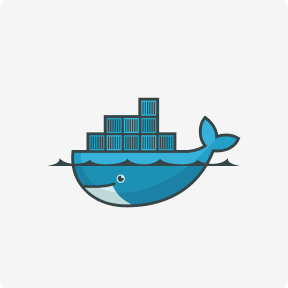Qfd Definition
Additionally, our software provides businesses with the tools to effectively communicate quality information throughout the organization. QFD originated in Japan in the late 1960’s and is used extensively in the far east to support product development in a range of industries including automotive, consumer electronics, clothing, construction and shipbuilding. Since the 1970’s, it has become increasingly adopted in the west and has been credited with supporting the revival of the US automotive industry. Implementing QFD can enable you to drive the voice of your customers throughout your organizational processes to increase their satisfaction and delight. The process of establishing the relationships between the rows and columns of a matrix is generally subjective. An application of the QFD method to the design of a hand-held hairdryer product is explored here.

The HOQ serves as a roadmap for later steps by graphically highlighting the key technical descriptors that must be prioritized and the relationships that must be taken into account during the design process. According to their relative importance, give the customer requirements importance ratings. The impact that each requirement has on customer satisfaction is reflected in these ratings. Analyze the connections between technical descriptors and customer requirements in a similar manner, indicating how much each technical descriptor helps to meet the needs of the customer. To enable effective design decision-making in the following steps, make sure the technical descriptors are well-defined and accurately reflect the customer requirements. These goals might be to increase market share, decrease time to market, increase customer satisfaction, or improve product quality.
3.1 QFD1 and QFD2 matrices
Perhaps more paint was specified or more sealer, but the rust problem remained when the product was delivered to the customer. By using QFD, the problem was firmly recognised at all levels in the company, including high-level management. As a result, the focus, discipline and resources needed to solve the problem were generated and applied. The insights from the QFD phases relevant to this particular case are considered in each of the following subheadings. QFD is basically a planning process with a quality approach to new product design, development, and implementation driven by customer needs and values. QFD has been successfully used by many world-class organizations in automobiles, ship building, electronics, aerospace, utilities, leisure and entertainment, financial, software, and other industries.
QFD aids in bringing out the maximum output necessary in the workspace when it comes to satisfying customers with their troubleshoots. This is when the critical part characteristics are translated into the critical process parameters for the production department to work with, i.e. from ‘what it will look like’ to ‘how we will make it’. The critical manufacturing processes and equipment are identified, the process flow charted and the resulting critical process parameters documented for use in Stage 4. Mitsubishi recognized many other factors that could influence their ship-buying customers’ needs and expectations. Potential conflicts between customer-expressed requirements (the situation described earlier on the PAVE VIPER laser program) would influence customer needs and expectations.
Will QFD replace my current product development methodology?
By incorporating customer feedback and requirements into the product development process, businesses can develop products and services that meet (or exceed) customer expectations. The diagram shown here will also help you understand the QFD methodology here. Once the matrices are completed, Six Sigma Black Belt practitioners can use the information to design their process or product according to critical target values and customer requirements. Six Sigma is all about producing products or services that deliver on customer demands. Quality function deployment is just another way to design processes that produce products or services that satisfy the customer. The purpose of Quality Function Deployment is not to replace an organization’s existing design process but rather support and improve an organization’s design process.

QFD is used to translate customer requirements (or VOC) into measureable design targets and drive them from the assembly level down through the sub-assembly, component and production process levels. QFD methodology provides a defined set of matrices utilized to facilitate this progression. The average consumer today has a multitude of options available to select from for similar products and services. function deployment Most consumers make their selection based upon a general perception of quality or value. In order to remain competitive, organizations must determine what is driving the consumer’s perception of value or quality in a product or service. They must define which characteristics of the products such as reliability, styling or performance form the customer’s perception of quality and value.
What is quality function deployment (QFD)?
The end result of the QFD is Room 9, which records the target set manually by the development team after taking into account the weighting, cost, and technical difficulty as well as the decision trade-offs from Room 8. TRIZ can help to eliminate contradictions discovered by the roof of the HoQ and on determining target values as well as developing new concepts for materials and design. 2.8 shows schematically a breakdown of the general four-phase QFD process model. Organization functions necessary to assure customer satisfaction, including business planning, packaging and logistics, procurement, marketing, sales & service.
- These components form the foundation of the QFD methodology and help organizations effectively analyze and prioritize customer requirements.
- Customers are attracted to what checks off all their boxes and know it will be worth investing in.
- It’s fine to develop a stretch product or process, but trying to hit the ball out of the park and create the world’s next best thing may not be realistic or cost-effective.
- By adhering to the discipline and structure of the QFD process, you will reduce your chance of missing or overlooking something during your development process.
Customers may rate several traits of high importance, so it’s okay to have multiple 5s or multiple 4s. This website is using a security service to protect itself from online attacks. There are several actions that could trigger this block including submitting a certain word or phrase, a SQL command or malformed data.

The operating system, battery, and glass used in the product will also affect the overall cost to customers, but not as strongly. Quality function deployment is a six sigma strategy which considers quality as the primary parameter for customer satisfaction. The quality function deployment is the task of design engineers; however, the efforts of all the departments are required to implement it successfully. The above diagram gives an overview of the different sections of a house of quality matrix.
Examine the dependencies, synergies, and conflicts between the technical descriptors to determine how they relate to one another. For instance, increasing a computer’s processing speed might result in increased power consumption, which would affect battery life. To put as fine a point on it as possible, quality function can help you validate whether you’re on the right path to satisfying your customers. As mentioned earlier, you may find slight variations in the QFD methodology because there isn’t a universally accepted way to conduct the matrix. However, these four seem to comprise the closest thing there is to a standard model.
Data Lake vs Data Warehouse Difference Between Them
Data mesh is a modern data architecture and organizational approach that aims to address the challenges of scaling and democratizing data within large, complex organizations. It represents a shift away from a centralized data approach to a more decentralized, domain-oriented model. Future-ready businesses require data to transform their functions and make informed decisions. Indeed, the data ingestion is relatively uncomplicated as it stores raw data, which is difficult to navigate and work with. The technological ecosystem imbibed within the data warehouse is closely linked with relational databases. Hence, investing in effective data storage is paramount, enabling organizations to transform their operations, and resulting in enhanced efficiency and long-term growth.

The education sector deals with a lot of unstructured data – attendance records, academic records, student details, fees, and more. This data is very raw and vast, making data lakes the perfect fit in the education sector. Furthermore, data teams can build ETL data pipelines and schema-on-read transformations and store data in a data lake.
Related Insights
The Lakehouse is an upgraded version of it that taps its advantages, such as openness and cost-effectiveness, while mitigating its weaknesses. It increases the reliability and structure of the data lake by infusing the best warehouse. SaaS BI platform for efficient data management and healthcare insights through advanced reporting tools and visualization functionality. Especially data lake vs data warehouse in the finance and investment sectors, data warehouses play a major role due to significant amounts of money at stake. Even a single point difference can result in devastating financial losses for thousands of people. In this case, data warehouses are used to analyze customer behavior and market trends as well as other relevant data to make precise forecasts.
- A data lake platform is essentially a collection of various raw data assets that come from an organization’s operational systems and other sources, often including both internal and external ones.
- It attempts to satisfy the desire to bring in the best of both data warehouse and lake, alluding to giving reliability and structure present in it with scalability and agility.
- Unlike traditional data warehouses, they can process video, audio, logs, texts, social media, sensor data and documents to power apps, analytics and AI.
- In this blog post, we will explore data lakes and data warehouses, their architecture, and their key features, enabling you to make the right choice for your organization.
- A data mart is a subset of the data warehouse as it stores data for a particular department, region, or unit of a business.
- Extract, transform, load (ETL) processes move data from its original source to the data warehouse.
Traditionally, data lakes excel at storing vast amounts of raw data — be it structured, semi-structured, or unstructured, without any specific constraints. Data warehouses, on the other hand, thrive on order, maintaining precise storage and organization of data with corresponding metadata. However, these distinctions are becoming less defined, and data lakehouses usually offer more flexibility to support both structured and unstructured data. A data lake approach is popular for organizations that ingest vast amounts of data in a constant stream from high-volume sources.
Benefits of a Data Warehouse
Knowing that your data is accurate, fresh, and complete is crucial for any decision-making process or data product. When data quality suffers, the outcomes can lead to wasted time, lost opportunities, lost revenue, and erosion of internal and external trust. Data lakes offer data engineering teams the freedom to select the right technologies for metadata, storage, and computation based on their unique requirements. So, as your data needs scale, your team can easily customize your data lake by integrating new elements of your data stack.

Since it is a management system made up of differente tecnologies and not a repository, it involves a higher level of investment. The return comes in the shape of better quality data that allows for faster decisions. This approach is valuable for businesses collecting data in real-time, in which every piece of information is valued equally. Businesses can use Data Lakes to handle the information and put it at the service of Marketing Departments. There is a wealth of user data, fragmented in various parameters – time, geography, preferences, demographics – that can be used to build segmented campaigns at hyper-personalized levels. There are no hindrances to introducing new data types, which makes using different applications easier.
What is data management and why is it important?
Raw data is data that has not yet been processed for a purpose and tends to be unstructured (think of a video file) or semi-structured (for instance, images with metadata attached). Perhaps the greatest difference between data lakes and data warehouses is the varying structure of raw vs. processed data. Data lakehouses, on the other hand, combine the best of both worlds, providing a unified platform for data warehousing and data lakes.

This combination can improve processing time and efficiency without compromising flexibility. Like “brunch” and “Bennifer”, data lakehouses are the portmanteau of the data warehouse amd data lake. They stitch together the features of a data warehouse and a data lake, fusing traditional data analytics technologies with advanced functionalities, such as machine learning capabilities.
 壯陽藥
壯陽藥
/>
The data lakehouse approach combines the strengths of data lakes and data warehouses. It can store both structured and semi-structured data, and it uses advanced technologies, such as Delta Lake or Apache Iceberg, for schema evolution and data versioning. It often uses distributed file systems or cloud-based storage for unified storage. Serving as centralized repositories, data lakes store raw, unprocessed data in its native format.
You can track inventory, analyze pricing policies and promotions as well as closely examine customer purchasing behavior. All this information is crucial when it comes to business intelligence systems and marketing and sales strategies. The client was maintaining separate data pipelines for each project which resulted in excessive utilization of computing resources. With multiple projects running concurrently, each with its own dedicated pipeline, computing infrastructure was under strain due to inefficiencies and overallocation. This approach led to resource wastage as projects with varying resource requirements couldn’t dynamically share or allocate computing power.
Recent Comments